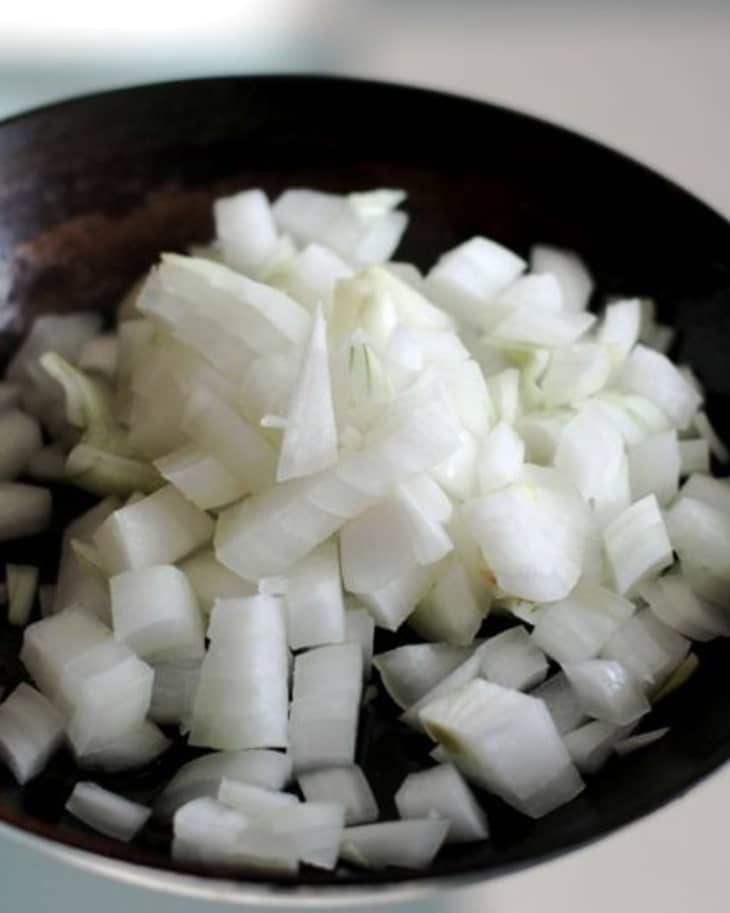How To Cook Onions Correctly

“Begin by cooking the onions …” is perhaps the most common phrases in savory recipes the world over. But what does this mean exactly, and what if you have to ‘sweat’ your onions instead, or cook them ‘until translucent’? Read on for our handy guide (with pictures!) on how to cook an onion.
Onions are the backbone of most savory dishes but they can produce a wide range of flavors depending on how you cook the onions. From the sharp pungency of raw to the sweet silkiness of caramelized onions, how you cook your onions will have a big influence on your recipe’s outcome.
Most recipes tell you to sauté the onions, a term which unfortunately doesn’t have a common understanding. Classically, sauté means to fry something quickly in a small amount of fat. But if the recipe goes on to say ‘until translucent’, well, that can sometimes take a while, especially if you have a lot of onions in a smaller pan.
So exactly how quick is quick? A good recipe will tell you to what stage the onions should be cooked: softened, translucent, golden, brown, and caramelized are frequently used terms.
Onions are almost always cooked in some kind of fat, although they can be softened in a small amount of liquid. Usually this fat is a neutral oil such as grapeseed oil, but can also be olive oil, butter/ghee, or bacon fat. I always start my onions with a pinch of salt to draw out the liquid, which helps encourage the onions to soften.
I’m not going to give you the exact times for cooking onions here. Onions will cook at different rates depending on factors such as the size of your pan, what it’s made from, what kind of onions you are using, and how hot you’re cooking them.
The best way to gauge your onions is by using your eyes and nose. As onions cook, they will take on a sweeter, caramel-like aroma and they will lose a lot of volume. You will need to keep a fairly close eye on things as onions can scorch easily. But if you keep your flame on medium and stir frequently, you can easily usher your onions to whichever stage of doneness you need.
How To Sweat, Brown, and Caramelize Onions
Nutritional Info
Ingredients
- Onions
- Oil or fat, like grapeseed oil, olive oil, or butter
- Salt
- Water
Equipment
- Frying pan
- Wooden spoon
Instructions
Warm the pan and add the onions. Make sure you have chosen a frying pan that will hold your onions snugly, but still gives you plenty of room to stir. Place the pan on your burner over a medium heat and add the oil or fat called for in your recipe. Then add your onions along with a pinch of salt.
Sweat the onions. The first stage is called sweating and usually happens very quickly. You are cooking the onions by maintaing a high enough heat to get them going, but not so high that they begin to brown. The heat and the salt will draw the moisture out of the onions, thus 'sweating' them. Onions will also start to glisten and look wet (ie, "sweaty"!). It sometimes helps to cover the pan at this stage to encourage the release of moisture, but be sure you check your onions and stir them frequently. Sweated onions are never browned.
Cook until translucent. If you keep cooking the onions for another few minutes, they will start to lose their opacity and become come translucent. The moisture will evaporate and the onions will wilt further. Keep stirring and adjusting the flame so that the onions cook, but again, do not let them brown.
Cook until golden or brown. In a few more minutes, the onions will start to take on some color. They will get slightly golden around the edges and start to have a sweet, slightly caramel-like aroma. The golden color will eventually deepen into brown
Cook until caramelized. Keep cooking the onions, stiring frequently, until they are brown all over and completely limp. Caramelized onions take some time — anywhere from 20 minutes to 45 minutes total cooking time depending on how deeply caramelized you like your onions. A browned glaze will develop on the bottom of the pan. When you judge your onions to be done, splash a little water or wine into the pan to dissolve the glaze. The water will bubble furiously. Stir and scrape until all the water has evaporated. If you want super dark onions, you can repeat this process again. Caramelized onions are completely soft and have a rich, dark color. They will have lost all their pungency and taste sweet.
Want more smart tutorials for getting things done around the home?
We’re looking for great examples of your own household intelligence too!
(Images: Dana Velden)
